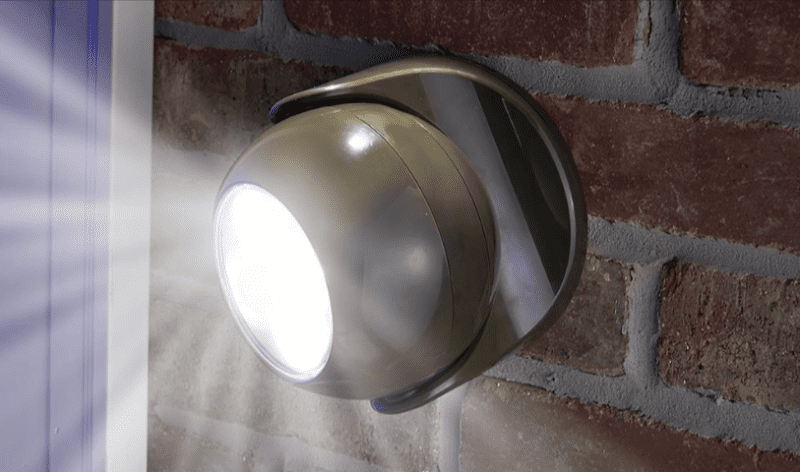Welcome to the world of low-power motion sensor lights, the unsung heroes of energy conservation and home security! These little wonders have made a huge impact in the way we light up our outdoor spaces, not only helping us save on electricity bills but also giving us a sense of safety and convenience.
In this guide, we’ll explore the numerous advantages of these eco-friendly and security-enhancing gadgets, discuss the steps to install them, and touch on factors to consider when choosing the perfect motion sensor lights for your home.
Advantages of Low-Power Motion Sensor Lights
Low-power motion sensor lights are real champs when it comes to saving energy. Since they only turn on when they detect movement, you won’t be wasting electricity by keeping your exterior lights on all night. Just think about it: these lights are like mini-environmental superheroes! One study even found that motion sensor lights can reduce energy consumption by up to 80% compared to traditional outdoor lighting (source 1). How cool is that?
Now, let’s talk safety. Imagine you’re coming home late at night, and it’s pitch black outside. Instead of fumbling for your keys in the dark, low-power motion sensor lights will brighten your path, like your own personal red carpet. Plus, they serve as an excellent deterrent for any would-be intruders (source 2). Bad guys prefer the cover of darkness, so when your lights suddenly illuminate the area, they’re more likely to skedaddle!
And hey, have you ever thought about the convenience factor? You won’t need to remember to turn your exterior lights on and off anymore, because these smart sensors have got your back. For example, let’s say you’re hosting a backyard barbecue, and the sun starts to set. Instead of interrupting your hosting duties to fiddle with light switches, your low-power motion sensor lights will do the job for you, so you can focus on grilling those burgers to perfection.
How To Install Motion Sensor Lights
Installing these lights is a breeze, and I’ll guide you through the process step by step. But first, let’s gather the tools you’ll more than likely need: a screwdriver, drill, wire stripper, and a voltage tester.
Step 1: Choose your location. You’ll want to place your motion sensor lights in areas where they’ll be most effective, like near entryways or dark corners (source 1). Make sure the sensor has a clear line of sight and isn’t obstructed by plants or other objects.
Step 2: Turn off the power. Safety first, right? Before you start working with wires, head to your electrical panel and switch off the circuit that controls the outdoor lighting. Don’t forget to use your voltage tester to confirm there’s no electricity flowing to the wires (source 2).
Step 3: Remove the old light fixture. Unscrew and gently pull away the existing fixture, then carefully disconnect the wires. You might want to snap a quick photo before you start, just in case you need a reference later.
Step 4: Install the mounting bracket. Your motion sensor light should come with a mounting bracket. Align it with the junction box, and secure it using the provided screws.
Step 5: Connect the wires. Now, this part might seem a bit tricky, but don’t worry! Just follow the manufacturer’s instructions, and you’ll be good to go. Generally, you’ll need to connect the white wires together, the black or red wires together, and the green or bare wires together (source 3). Use wire nuts to secure the connections and wrap them with electrical tape for extra safety.
Step 6: Attach the light fixture. Carefully position your motion sensor light onto the mounting bracket, and secure it with the provided screws. Finally, adjust the angle and sensitivity of the sensor according to your preferences.
Voilà! You’ve successfully installed your motion sensor light. Now you can sit back and enjoy the added security and convenience it brings to your home. And hey, you did it all by yourself! Give yourself a pat on the back, because you deserve it.
Factors To Consider When Purchasing Motion Sensor Lights
Let’s start by discussing the detection range. You’ll want a light with a wide enough range to cover the desired area. Most sensors have a range between 40 to 75 feet, but you’ll find some outliers too. For example, if you’re looking to cover a small porch or walkway, a sensor with a 40-foot range should do the trick. But if you want to light up your entire backyard, you might need something with a broader reach.
Next up: sensitivity. How quickly do you want your lights to react to motion? Some models come with adjustable sensitivity, allowing you to tweak it to your preference. For instance, you might want to set it lower if you have pets roaming around, so they don’t constantly trigger the lights. On the other hand, a higher sensitivity is great for catching intruders or other unwanted visitors.
Now you’ll want to consider the lighting duration. This refers to how long the lights stay on after they’ve been triggered. You’ll find some models with fixed durations like 30 seconds, while others allow you to customize the duration anywhere between 1 second to 10 minutes. Think about how long you’d like the area to stay illuminated once the lights have been activated.
Oh, and don’t forget about the power source! Low-power motion sensor lights can run on solar power, batteries, or even be hardwired into your electrical system. Solar-powered lights are eco-friendly and easy to install, but they might not be the best choice if your exterior doesn’t get much sunlight. Battery-powered options offer flexibility in placement but need battery replacements. Hardwired lights require a bit more effort to install, but they won’t leave you in the dark when the batteries die.
Safety Benefits of Motion Sensor Lights
Alright, let’s chat about the safety benefits of motion sensor lights.
Motion sensor lights are like your very own night watchmen. By automatically lighting up when they detect movement, they can deter potential intruders from even thinking about messing with your home.
You see, burglars love the cover of darkness, so when they’re suddenly bathed in light, it can make ’em think twice. Plus, if you’ve got nosy neighbors (you know who you are), they might catch a glimpse of the would-be intruder and alert the authorities.
They can also help prevent accidents around your home’s exterior. Picture this: you’re taking out the trash late at night, and it’s pitch black. You might trip on a garden hose or bump into that patio chair you forgot to put away. Ouch! But with motion sensor lights, you’ll have a well-lit path, making it much easier to navigate and avoid any hazards.
Another cool benefit is that they can help you save energy. Unlike traditional outdoor lights that stay on for hours, motion sensor lights only turn on when they’re needed. This means they use less electricity and help you save on your energy bill. Plus, it’s great for the environment, so it’s a win-win!
And then there’s peach of mind. You know that feeling when you’re home alone and hear a strange noise outside? It can be super unnerving. But with motion sensor lights, you’ll know right away if there’s any activity around your home. So whether it’s just a raccoon raiding your trash cans or something more sinister, you’ll be in the know.
Conclusion
low-power motion sensor lights are the perfect fusion of energy-saving, safety-enhancing, and convenience-boosting technology. With their ability to slash energy consumption by up to 80%, deter potential intruders, and illuminate your surroundings only when needed, they’re a smart addition to any home.
The installation process is also a cinch, and you have the flexibility to choose from various ranges, sensitivities, lighting durations, and power sources to suit your specific needs. Ultimately, these ingenious devices provide not only a safer and more secure home environment but also a more sustainable and eco-friendly one.



